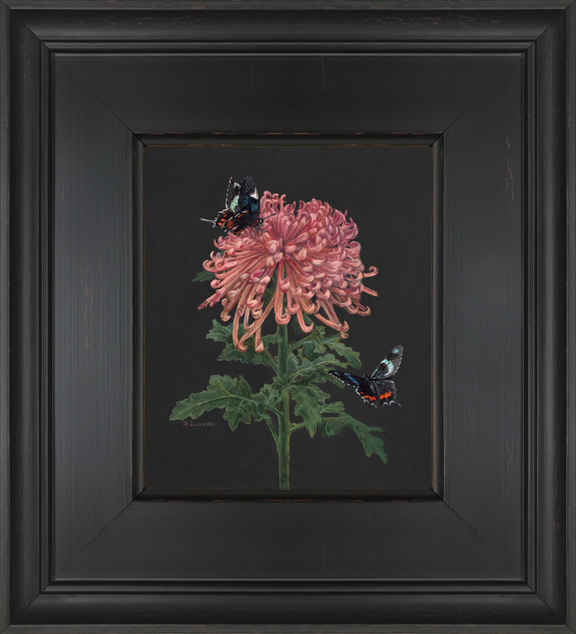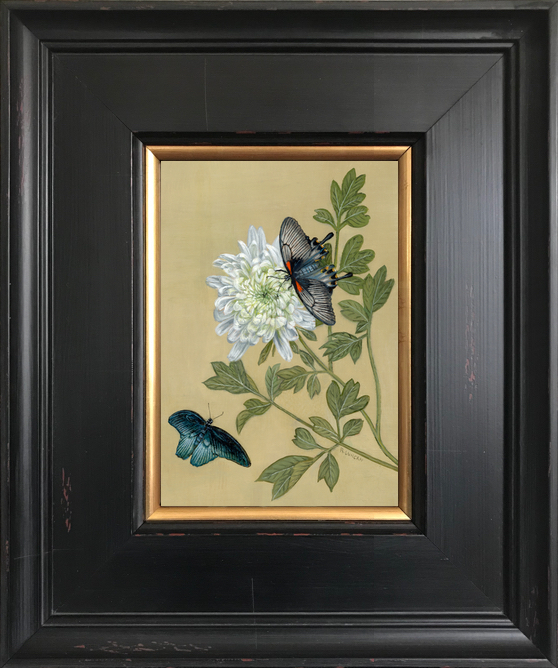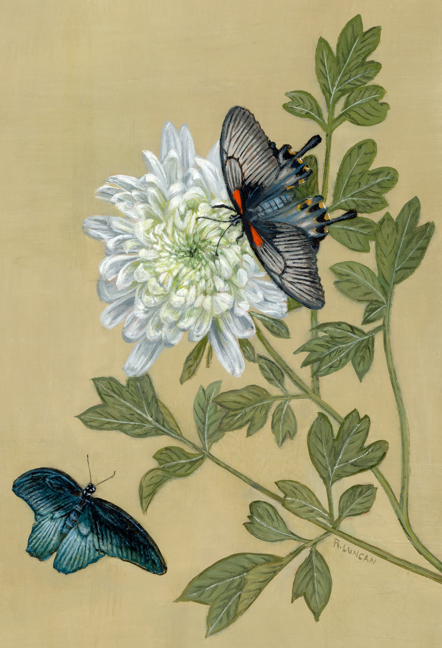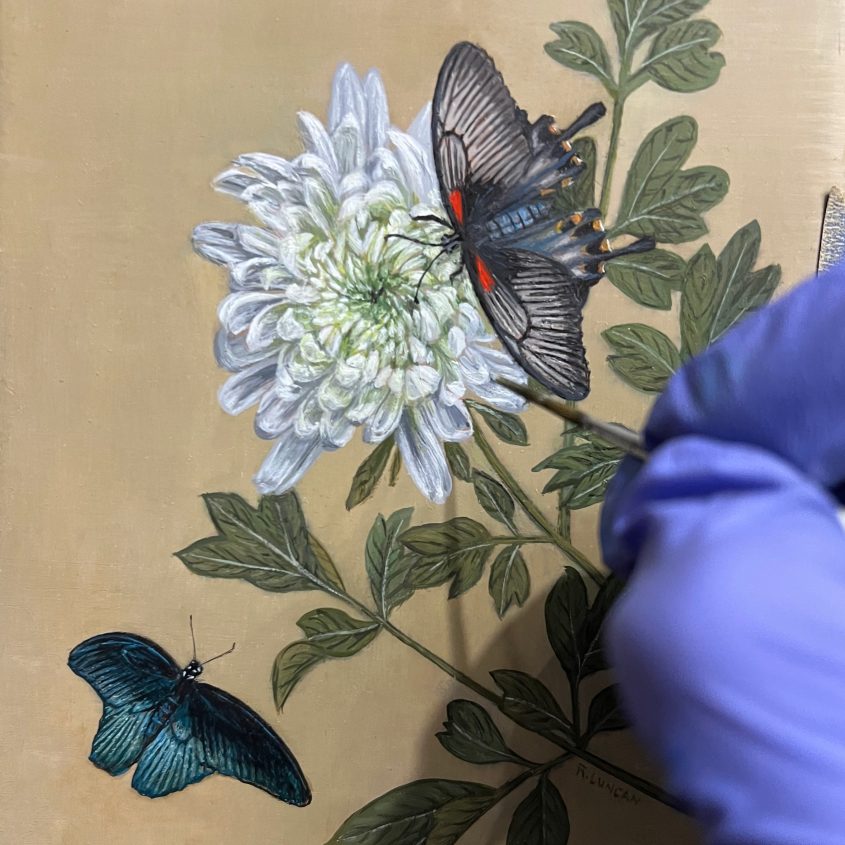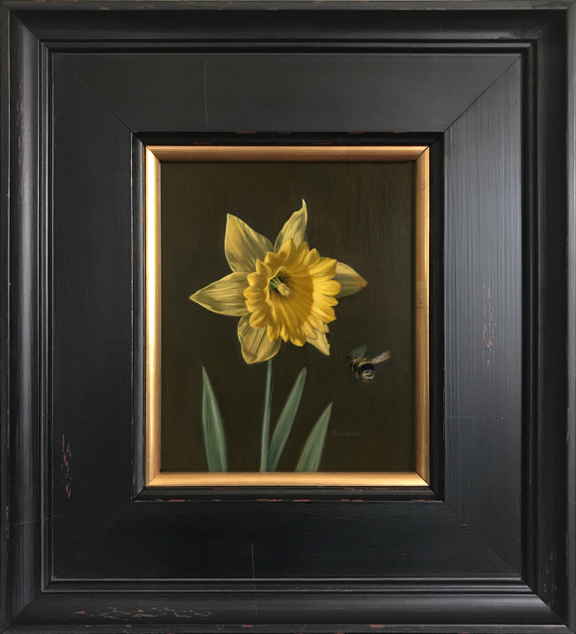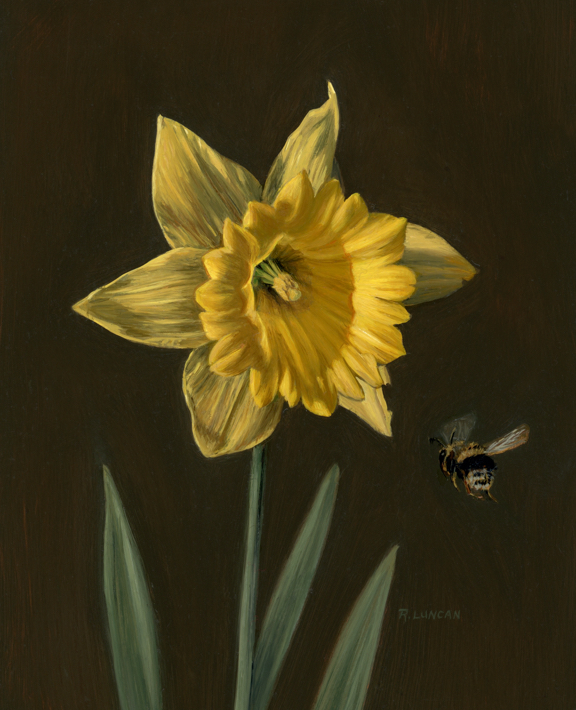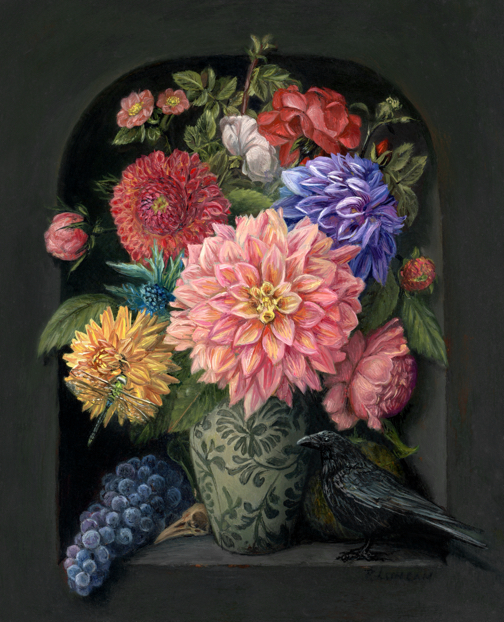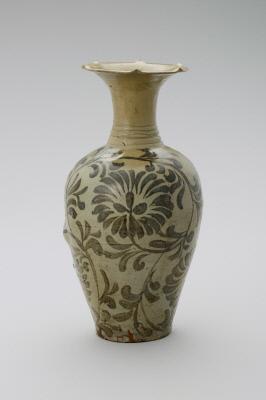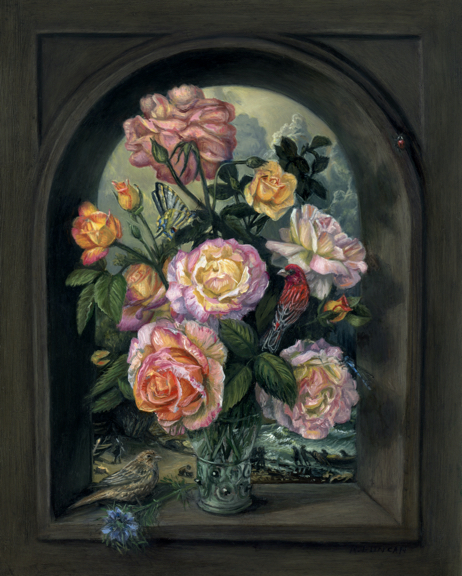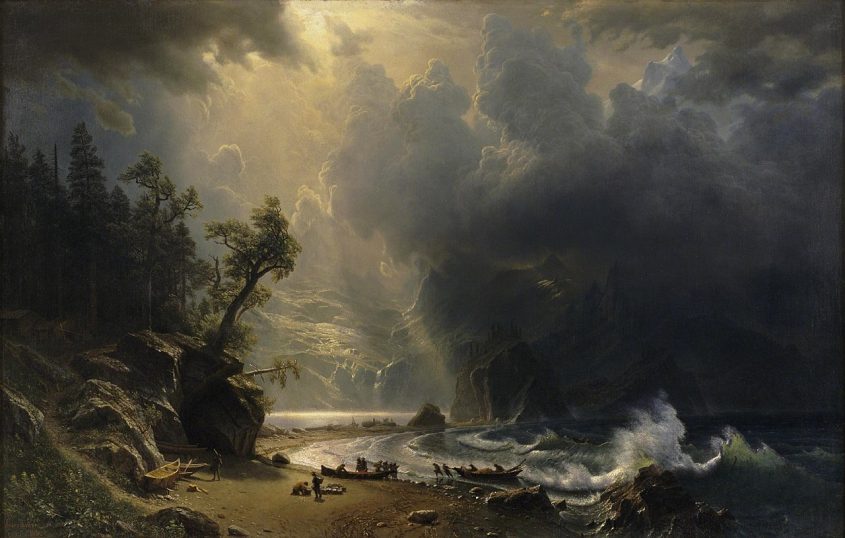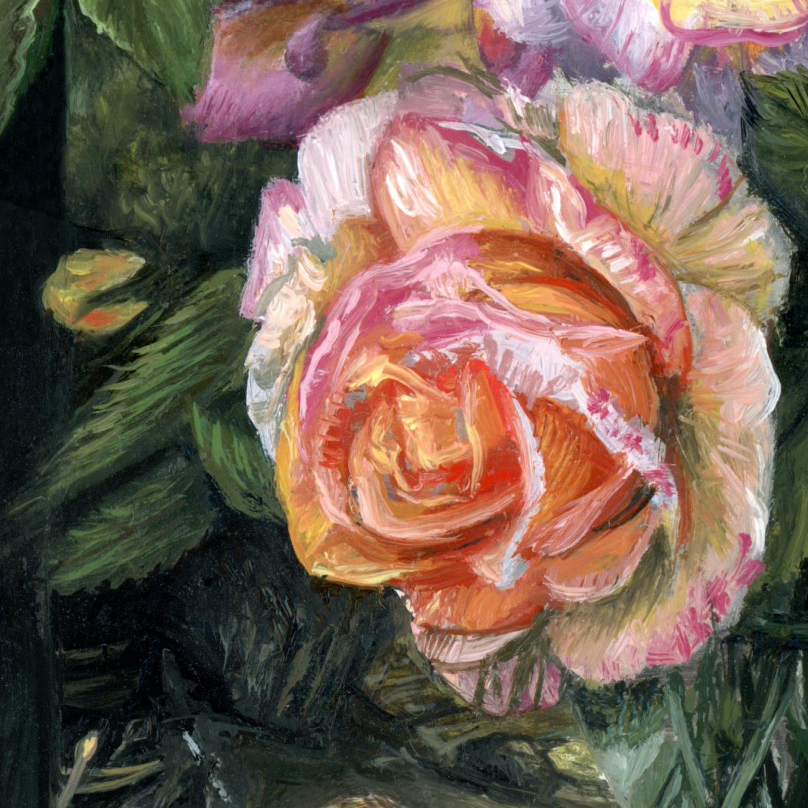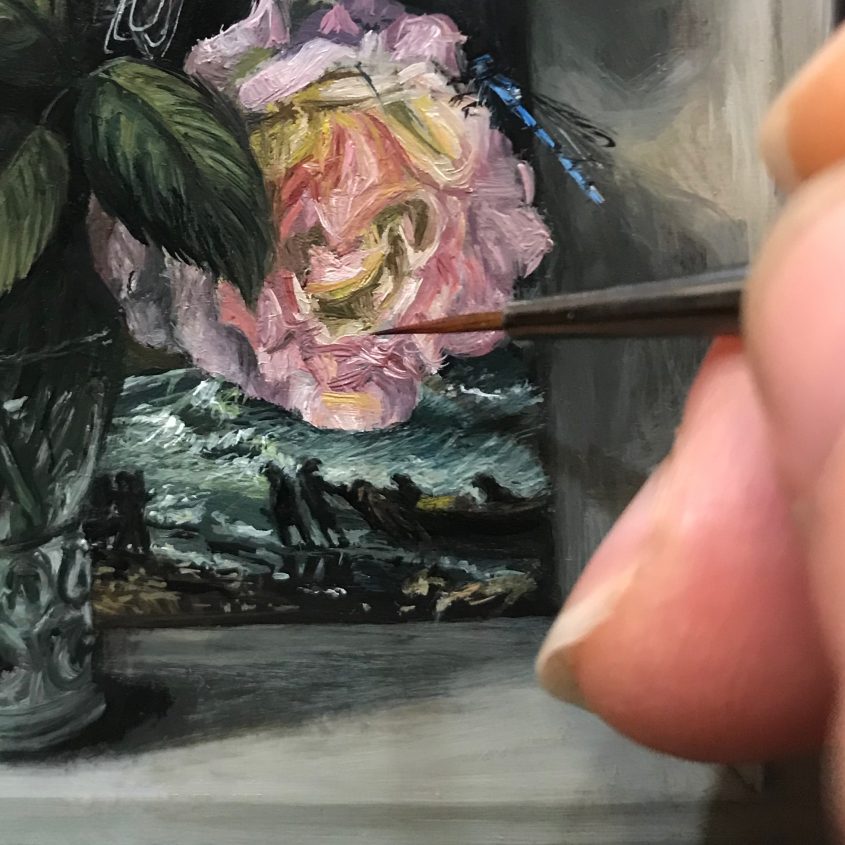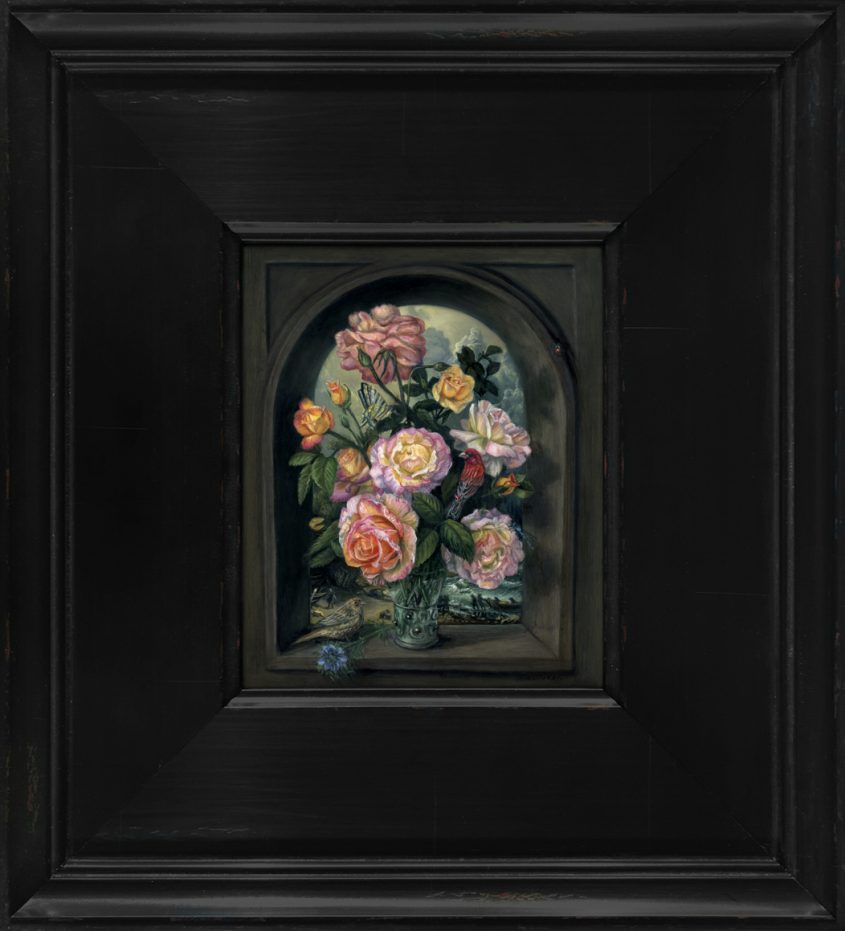After a nearly yearlong hiatus, I’m thrilled to return to my Monthly Miniature tradition! Not coincidentally, my son just celebrated his first birthday. Over the past year, my limited studio time has been devoted to commissions and preparing a body of work for exhibition at Harris Harvey Gallery (open now — more on that soon).
Even while busy, I’ve deeply missed the Monthly Miniature series. It’s been a creative anchor for me — a way to share new ideas and connect with you. Having that regular rhythm to shape and develop my work is something I’m grateful to have again.
Revisiting an Idea with New Perspective
This month’s miniature, “Cuban Cattlehearts and the Mum,” builds on a painting I created last year, “Common Rose Swallowtail and the Mum” (see below). Though the compositions and subjects are similar, the mood of each piece is quite different.
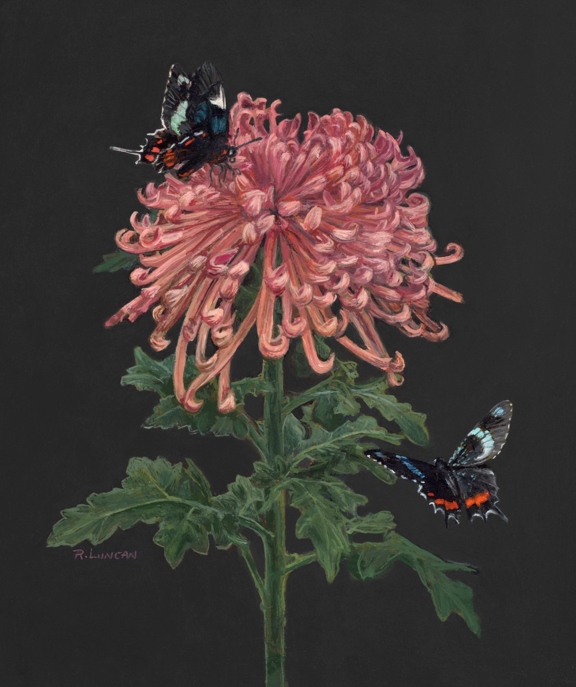
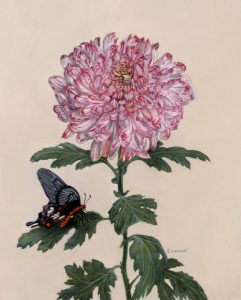
Following my ongoing study of historical still life painting, I drew inspiration for this work from:
- Barbara Regina Dietzsch, an 18th-century Bavarian artist,
- Keika Hasegawa’s late 19th-century woodblock print book One Hundred Chrysanthemums,
- And the remarkable prints and paintings of Maria Sibylla Merian from the 1600s.
In this piece, I wanted to intentionally explore the effect of background color — trading the darker background for a lighter one. Though it’s a simple shift, this kind of experimentation helps me better understand how mood, meaning, and composition work together in my paintings. Interestingly, having a few elements well defined actually gives me more freedom to respond to all the unexpected decisions that arise while creating.
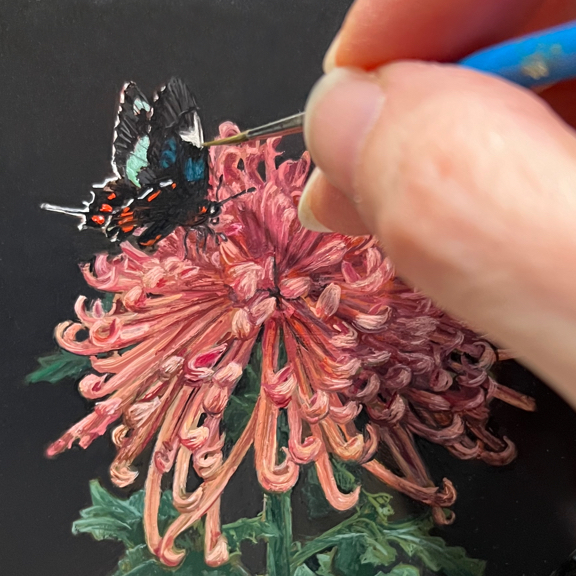
Looking Ahead
Usually, I have a list of ideas waiting in the wings for the next miniature. Right now, I’m embracing the unknown — taking some quiet moments to reflect on the new work at the gallery and imagine where this journey might lead next.
I hope this post finds you well, and that you enjoy the new painting! Fingers crossed you’ll hear from me again soon. Until then, enjoy the last of the warm weather if you can, and take time to notice the small wonders outdoors.
